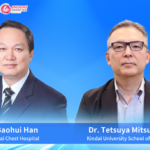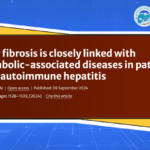
Editor’s Note: Antimicrobial resistance (AMR) continues to challenge global public health, demanding human ingenuity and collaboration. The One Health concept has emerged as a key strategy to curb AMR. Recently, the highly anticipated "Second One Health Antimicrobial Resistance Control Conference" was successfully held in Hangzhou. Building on the success of the first conference, this event saw significant improvements in scope, content, and session design. Infectious Diseases Frontier had the privilege of interviewing the conference chair, Dr. Yonghong Xiao, who provided in-depth insights into the core role of the One Health concept in AMR control and how the conference promotes interdisciplinary and interdepartmental collaboration to tackle AMR together.01 Infectious Diseases Frontier: Congratulations on the successful conclusion of this conference. Compared to the first conference, what changes or innovations did this year’s event introduce in terms of content, format, or goals?
Dr. Xiao: The second One Health Antimicrobial Resistance Control Conference not only built on the success of the first meeting but also explored new models of academic exchange. Compared to the first conference, this year’s event saw significant progress and expansion in several aspects.
First, the scale of the event was notably larger. Unlike the first conference, which had one main session and two parallel sub-sessions, this year’s event maintained the main session for in-depth discussions on AMR control by domestic and international experts, while also featuring four parallel sub-sessions with 24 topics in total. This expansion enriched the conference’s content, offering attendees a broader platform for exchange.
Secondly, the preparations for this year’s conference were more thorough, as we launched a paper submission process in advance. Due to time constraints, we were unable to collect papers for the first conference. However, this year, we received numerous excellent submissions, and through a selection process, these papers were presented as oral reports, poster displays, and compiled into a proceedings volume. This provided young scholars with a valuable opportunity to showcase their work. We also awarded the top five papers during the opening ceremony to encourage further contributions.
Moreover, the topics for this year’s conference were more thoughtfully curated. In addition to covering research advancements in clinical infection diagnosis and treatment, the event included broader topics such as research related to agriculture. We particularly emphasized cross-disciplinary exchange, especially the integration of the One Health concept across different fields. Sessions on topics such as mechanism studies, research on AMR transmission in various environments, molecular epidemiology studies, and experiences in regional AMR control were designed to offer attendees a broader academic perspective and foster collaboration opportunities.
Finally, while expanding the content, we also focused on maintaining the conference’s appeal and cohesion. By inviting academicians for keynote speeches, field experts for topic presentations, and providing oral and poster exchanges for young scholars, the conference was made even more vibrant. Additionally, we partnered with media outlets like Infectious Diseases Frontier to carry out extensive publicity and reporting. This not only raised the visibility of the conference but also helped spread the One Health concept, encouraging collective action in the fight against AMR.
Overall, this year’s conference saw significant improvements in scale, content, topic design, and publicity, providing participants with a more expansive platform for exchange and learning. I appreciate everyone’s attention and support, and I look forward to continuing our efforts together to advance AMR control.
02 Infectious Diseases Frontier: As the conference chair, how do you view the role of the One Health concept in controlling antimicrobial resistance? How does the conference promote cooperation between different disciplines and sectors through this concept?
Dr. Xiao: The One Health concept has emerged as an effective method for the prevention and control of infectious diseases, including antimicrobial resistance, after years of exploration. It emphasizes that controlling AMR cannot be achieved solely through clinical healthcare measures.
For instance, antibiotic-resistant bacteria can spread across different environments, with bidirectional transmission—bacteria from animals can spread to humans and vice versa. This interconnectivity means that focusing on any single aspect alone will not effectively control AMR. Control measures must involve cross-sector collaboration, which is the essence of the quadripartite collaboration advocated by organizations like the WHO, FAO, OIE, and UNEP.
Although this mechanism has only recently been proposed, and questions regarding implementation and strategies remain, it is precisely because of these unknowns and the need for coordination that we established the One Health Antimicrobial Resistance Control Conference. This platform is not just for academic exchange but is a crucial node for gathering efforts from various sectors to address AMR through scientific research and innovation.
Through this platform, we can achieve the following goals: first, showcase the research achievements of different fields in AMR control, facilitating mutual learning; second, foster collaboration between experts from different disciplines, allowing them to align their efforts in the same direction; and third, through deeper exchange and idea-sharing, we can explore more effective One Health strategies for AMR control, such as how to organize and implement interventions and which control methods work best across different fields and environments.
Thus, the One Health Antimicrobial Resistance Control Conference serves not only as a venue for academic exchange but as a platform for future cooperation. As the platform develops, I believe it will make significant contributions to AMR control efforts.
03 Infectious Diseases Frontier: In your plenary speech, you shared the “Domestic and International Progress in One Health AMR Control.” Could you summarize the main challenges and advancements in global AMR issues?
Dr. Xiao: The AMR problem is becoming increasingly severe, as highlighted by recent reports in high-level professional journals. These reports indicate that AMR poses a significant threat to human health, the global economy, and even the UN’s 2030 Agenda for Sustainable Development. For example, a recent study in The Lancet predicted that over the next 25 years, more than 39 million people could die from antimicrobial-resistant infections. The economic impact of AMR is also substantial, and this is a challenge we must face head-on.
While we have implemented a range of measures to address AMR, many of these actions remain isolated, lacking coordinated efforts. It’s like ten fingers failing to form a fist and exert force in the same direction. This scattered approach makes it difficult to completely stop the spread or occurrence of AMR.
For instance, humans may carry resistant bacteria, and in regions with poor environmental hygiene, such as parts of Africa, water sources and vectors like flies can contribute to the spread of resistant bacteria. Moreover, the global movement of people and migratory birds is expanding the reach of AMR. Addressing AMR from a single sector is clearly insufficient.
The solution requires a One Health strategy. However, while this strategy has been around for a while, translating it into effective action and coordinating efforts across various fields remains a challenge. At the macro-management level, we need to coordinate efforts across different fields and disciplines to conduct research and implement interventions. On the scientific front, we must investigate which stage of resistant bacteria development and transmission offers the most valuable intervention opportunities.
In the field of animal health, for example, antibiotics are used to treat infectious diseases in animals, but if antibiotic use in animals is not as precise as in humans, the result is the same—an increase in resistance. Therefore, research on the differences in treatment methods between animals and humans and the need for collaborative research between professionals from both fields is essential.
Overall, AMR control requires us to join forces, find the right methods, and work collectively. This is a task we all share, and one that requires persistent effort.
04 Infectious Diseases Frontier: Lastly, what message would you like to convey to professionals from various fields and the public following this conference? Are there specific calls to action or expectations you would like to highlight?
Dr. Xiao: The second One Health Antimicrobial Resistance Control Conference marks further progress compared to the first meeting. This conference brought together professionals and managers from different fields, providing an excellent opportunity for exchange. I hope this meeting will achieve the following goals:
First, promote deep exchange among experts from various fields, allowing them to share their research findings and insights. Second, I hope that through the exchange of ideas, we can contribute new perspectives and knowledge to the promotion of the One Health strategy. AMR control is a complex and challenging task that requires the concerted efforts of all sectors. I believe that by continuing to gather and exchange ideas and applying what we learn to our respective fields, we can promote the implementation of new concepts and practices.
In addition, as we implement the One Health strategy locally, I encourage active exploration to generate valuable experiences for other regions. In future One Health Antimicrobial Resistance Control Conferences, we can further exchange these experiences, creating a positive cycle of learning and contribution.
AMR control requires not only the participation of professionals but also the broad involvement of society. Therefore, I encourage all attendees, regardless of their field, to promote AMR control awareness among non-professionals in their regions, helping raise public awareness of the importance of AMR control. Only through the collective participation of all sectors can we achieve effective AMR control.
Finally, I hope everyone can enjoy the beauty of Hangzhou, a city full of history, while taking time to relax and reflect outside of work.


